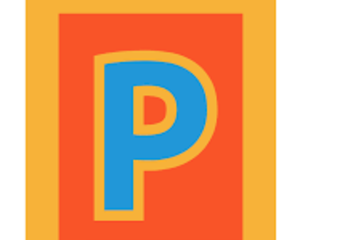We found 48 results that contain "sd"
Posted on: #iteachmsu


Computer security, cybersecurity or information technology security
Computer security, cybersecurity or information technology security (IT security) is the protection of computer systems and networks from information disclosure, theft of or damage to their hardware, software, or electronic data, as well as from the disruption or misdirection of the services they provide.
Cyber could be defined as something related to the group of computers or the internet. At the same time, security means the mechanism of protecting anything. So both the terms Cyber and security took together define the way of protecting user data from the malicious attacks that could lead to the security breach.
Cyber could be defined as something related to the group of computers or the internet. At the same time, security means the mechanism of protecting anything. So both the terms Cyber and security took together define the way of protecting user data from the malicious attacks that could lead to the security breach.
Posted on: #iteachmsu


PL-Description is the pattern of narrative development that aims to make vivid a
Description is the pattern of narrative development that aims to make vivid a place, object, character, or group. Description is one of four rhetorical modes, along with exposition, argumentation, and narration. In practice it would be difficult to write literature that drew on just one of the four basic modesDescription is the pattern of narrative development that aims to make vivid a place, object, character, or group. Description is one of four rhetorical modes, along with exposition, argumentation, and narration. In practice it would be difficult to write literature that drew on just one of the four basic modesDescription is the pattern of narrative development that aims to make vivid a place, object, character, or group. Description is one of four rhetorical modes, along with exposition, argumentation, and narration. In practice it would be difficult to write literature that drew on just one of the four basic modes.
ASSESSING LEARNING
Posted on: #iteachmsu


e learning
e learning sdftkolpfijnokmdjnbgvhbh vfdhjiovdknvef v ebebnovenve b ngegnlemgvr vbierughkvnerlv e ebeurerjnve vegnvenvggelv
Assessing Learning
Posted on: Test group new


Logic and rationality
The study of logical argumentation is relevant to the study of critical thinking. Logic is concerned with the analysis of arguments, including the appraisal of their correctness or incorrectness.[33] In the field of epistemology, critical thinking is considered to be logically correct thinking, which allows for differentiation between logically true and logically false statements.[34]
In "First wave" logical thinking, the thinker is removed from the train of thought, and the analysis of connections between concepts or points in thought is ostensibly free of any bias. In his essay Beyond Logicism in Critical Thinking Kerry S. Walters describes this ideology thus: "A logistic approach to critical thinking conveys the message to students that thinking is legitimate only when it conforms to the procedures of informal (and, to a lesser extent, formal) logic and that the good thinker necessarily aims for styles of examination and appraisal that are analytical, abstract, universal, and objective. This model of thinking has become so entrenched in conventional academic wisdom that many educators accept it as canon".[29] Such principles are concomitant with the increasing dependence on a quantitative understanding of the world.
In "First wave" logical thinking, the thinker is removed from the train of thought, and the analysis of connections between concepts or points in thought is ostensibly free of any bias. In his essay Beyond Logicism in Critical Thinking Kerry S. Walters describes this ideology thus: "A logistic approach to critical thinking conveys the message to students that thinking is legitimate only when it conforms to the procedures of informal (and, to a lesser extent, formal) logic and that the good thinker necessarily aims for styles of examination and appraisal that are analytical, abstract, universal, and objective. This model of thinking has become so entrenched in conventional academic wisdom that many educators accept it as canon".[29] Such principles are concomitant with the increasing dependence on a quantitative understanding of the world.
DISCIPLINARY CONTENT
Posted on: #iteachmsu


Why dot balls are being shown as trees in scorecard in IPL 2023 playoffs
It is an initiative between TATA Group and Indian Premier League to encourage tree plantation drives around the country. TATA Group and IPL will plant 500 trees for every dot ball being bowled in the playoffs round in IPL 2023. This is part of BCCI’s green initiative. Playoffs will have 4 games, Qualifier 1, Eliminator 1, Qualifier 2, and The Final at Narendra Modi Cricket Stadium in Ahmedabad. Gujarat Titans, Chennai Super Kings, Lucknow Super Giants, and Mumbai Indians are the four teams taking part in the Indian Premier League’s playoffs round. Gujarat Titans and Chennai are fighting out on Tuesday evening to secure their place in the finals.
ASSESSING LEARNING
Posted on: #iteachmsu


Article For Software development life cycle
What is SDLC?
SDLC is a process followed for a software project, within a software organization. It consists of a detailed plan describing how to develop, maintain, replace and alter or enhance specific software. The life cycle defines a methodology for improving the quality of software and the overall development process.
The following figure is a graphical representation of the various stages of a typical SDLC.
A typical Software Development Life Cycle consists of the following stages −
Stage 1: Planning and Requirement Analysis
Requirement analysis is the most important and fundamental stage in SDLC. It is performed by the senior members of the team with inputs from the customer, the sales department, market surveys and domain experts in the industry. This information is then used to plan the basic project approach and to conduct product feasibility study in the economical, operational and technical areas.
Planning for the quality assurance requirements and identification of the risks associated with the project is also done in the planning stage. The outcome of the technical feasibility study is to define the various technical approaches that can be followed to implement the project successfully with minimum risks.
Stage 2: Defining Requirements
Once the requirement analysis is done the next step is to clearly define and document the product requirements and get them approved from the customer or the market analysts. This is done through an SRS (Software Requirement Specification) document which consists of all the product requirements to be designed and developed during the project life cycle.
Stage 3: Designing the Product Architecture
SRS is the reference for product architects to come out with the best architecture for the product to be developed. Based on the requirements specified in SRS, usually more than one design approach for the product architecture is proposed and documented in a DDS - Design Document Specification.
This DDS is reviewed by all the important stakeholders and based on various parameters as risk assessment, product robustness, design modularity, budget and time constraints, the best design approach is selected for the product.
A design approach clearly defines all the architectural modules of the product along with its communication and data flow representation with the external and third party modules (if any). The internal design of all the modules of the proposed architecture should be clearly defined with the minutest of the details in DDS.
Stage 4: Building or Developing the Product
In this stage of SDLC the actual development starts and the product is built. The programming code is generated as per DDS during this stage. If the design is performed in a detailed and organized manner, code generation can be accomplished without much hassle.
Developers must follow the coding guidelines defined by their organization and programming tools like compilers, interpreters, debuggers, etc. are used to generate the code. Different high level programming languages such as C, C++, Pascal, Java and PHP are used for coding. The programming language is chosen with respect to the type of software being developed.
Stage 5: Testing the Product
This stage is usually a subset of all the stages as in the modern SDLC models, the testing activities are mostly involved in all the stages of SDLC. However, this stage refers to the testing only stage of the product where product defects are reported, tracked, fixed and retested, until the product reaches the quality standards defined in the SRS.
Stage 6: Deployment in the Market and Maintenance
Once the product is tested and ready to be deployed it is released formally in the appropriate market. Sometimes product deployment happens in stages as per the business strategy of that organization. The product may first be released in a limited segment and tested in the real business environment (UAT- User acceptance testing).
Then based on the feedback, the product may be released as it is or with suggested enhancements in the targeting market segment. After the product is released in the market, its maintenance is done for the existing customer base.Video link:Embedded video link:Link: https://projects.invisionapp.com/d/main#/console/20294675/458743820/preview
SDLC is a process followed for a software project, within a software organization. It consists of a detailed plan describing how to develop, maintain, replace and alter or enhance specific software. The life cycle defines a methodology for improving the quality of software and the overall development process.
The following figure is a graphical representation of the various stages of a typical SDLC.
A typical Software Development Life Cycle consists of the following stages −
Stage 1: Planning and Requirement Analysis
Requirement analysis is the most important and fundamental stage in SDLC. It is performed by the senior members of the team with inputs from the customer, the sales department, market surveys and domain experts in the industry. This information is then used to plan the basic project approach and to conduct product feasibility study in the economical, operational and technical areas.
Planning for the quality assurance requirements and identification of the risks associated with the project is also done in the planning stage. The outcome of the technical feasibility study is to define the various technical approaches that can be followed to implement the project successfully with minimum risks.
Stage 2: Defining Requirements
Once the requirement analysis is done the next step is to clearly define and document the product requirements and get them approved from the customer or the market analysts. This is done through an SRS (Software Requirement Specification) document which consists of all the product requirements to be designed and developed during the project life cycle.
Stage 3: Designing the Product Architecture
SRS is the reference for product architects to come out with the best architecture for the product to be developed. Based on the requirements specified in SRS, usually more than one design approach for the product architecture is proposed and documented in a DDS - Design Document Specification.
This DDS is reviewed by all the important stakeholders and based on various parameters as risk assessment, product robustness, design modularity, budget and time constraints, the best design approach is selected for the product.
A design approach clearly defines all the architectural modules of the product along with its communication and data flow representation with the external and third party modules (if any). The internal design of all the modules of the proposed architecture should be clearly defined with the minutest of the details in DDS.
Stage 4: Building or Developing the Product
In this stage of SDLC the actual development starts and the product is built. The programming code is generated as per DDS during this stage. If the design is performed in a detailed and organized manner, code generation can be accomplished without much hassle.
Developers must follow the coding guidelines defined by their organization and programming tools like compilers, interpreters, debuggers, etc. are used to generate the code. Different high level programming languages such as C, C++, Pascal, Java and PHP are used for coding. The programming language is chosen with respect to the type of software being developed.
Stage 5: Testing the Product
This stage is usually a subset of all the stages as in the modern SDLC models, the testing activities are mostly involved in all the stages of SDLC. However, this stage refers to the testing only stage of the product where product defects are reported, tracked, fixed and retested, until the product reaches the quality standards defined in the SRS.
Stage 6: Deployment in the Market and Maintenance
Once the product is tested and ready to be deployed it is released formally in the appropriate market. Sometimes product deployment happens in stages as per the business strategy of that organization. The product may first be released in a limited segment and tested in the real business environment (UAT- User acceptance testing).
Then based on the feedback, the product may be released as it is or with suggested enhancements in the targeting market segment. After the product is released in the market, its maintenance is done for the existing customer base.Video link:Embedded video link:Link: https://projects.invisionapp.com/d/main#/console/20294675/458743820/preview
Authored by: Vijayalaxmi vishvanath mali
Navigating Context
Posted on: #iteachmsu


What is natural language processing?
Natural language processing (NLP) refers to the branch of computer science—and more specifically, the branch of artificial intelligence or AI—concerned with giving computers the ability to understand text and spoken words in much the same way human beings can.
NLP combines computational linguistics—rule-based modeling of human language—with statistical, machine learning, and deep learning models. Together, these technologies enable computers to process human language in the form of text or voice data and to ‘understand’ its full meaning, complete with the speaker or writer’s intent and sentiment. https://byjus.com/biology/flower/
NLP drives computer programs that translate text from one language to another, respond to spoken commands, and summarize large volumes of text rapidly—even in real time. There’s a good chance you’ve interacted with NLP in the form of voice-operated GPS systems, digital assistants, speech-to-text dictation software, customer service chatbots, and other consumer conveniences. But NLP also plays a growing role in enterprise solutions that help streamline business operations, increase employee productivity, and simplify mission-critical business processehttps://byjus.com/biology/flower/
NLP combines computational linguistics—rule-based modeling of human language—with statistical, machine learning, and deep learning models. Together, these technologies enable computers to process human language in the form of text or voice data and to ‘understand’ its full meaning, complete with the speaker or writer’s intent and sentiment. https://byjus.com/biology/flower/
NLP drives computer programs that translate text from one language to another, respond to spoken commands, and summarize large volumes of text rapidly—even in real time. There’s a good chance you’ve interacted with NLP in the form of voice-operated GPS systems, digital assistants, speech-to-text dictation software, customer service chatbots, and other consumer conveniences. But NLP also plays a growing role in enterprise solutions that help streamline business operations, increase employee productivity, and simplify mission-critical business processehttps://byjus.com/biology/flower/
Authored by: Pranjali
Disciplinary Content
Posted on: #iteachmsu


How does generative AI work? -- 935
Generative AI starts with a prompt that could be in the form of a text, an image, a video, a design, musical notes, or any input that the AI system can process. Various AI algorithms then return new content in response to the prompt. Content can include essays, solutions to problems, or realistic fakes created from pictures or audio of a person.
Early versions of generative AI required submitting data via an API or an otherwise complicated process. Developers had to familiarize themselves with special tools and write applications using languages such as Python.
Now, pioneers in generative AI are developing better user experiences that let you describe a request in plain language. After an initial response, you can also customize the results with feedback about the style, tone and other elements you want the generated content to reflect.
Early versions of generative AI required submitting data via an API or an otherwise complicated process. Developers had to familiarize themselves with special tools and write applications using languages such as Python.
Now, pioneers in generative AI are developing better user experiences that let you describe a request in plain language. After an initial response, you can also customize the results with feedback about the style, tone and other elements you want the generated content to reflect.
Authored by: Vaishu
Navigating Context
Posted on: #iteachmsu


Healthcare providers
Healthcare Providers Conference Description : (700 char) Human trafficking-considered modern-day slavery- is a global problem and is becoming increasingly prevalent across the World. Types and venues of trafficking in the United States Identifying victims of trafficking in healthcare settings Identifying warning signs of trafficking in healthcare settings for minors and adults Identifying resources for reporting suspected victims of human trafficking. The training requirement dictates a timeline beginning with the first renewal cycle for the period of 2017-2022. Let's talk more and research many areas, So join us by registering
The timeline for the training of individuals who are seeking initial nursing licensure - is 5 or more years of experience.
The timeline for the training of individuals who are seeking initial nursing licensure - is 5 or more years of experience.
Authored by: Chathu
Assessing Learning
Posted on: #iteachmsu


Finibus Bonorum et Malorum", written by Cicero in 45 BC
Section 1.10.33 of "de Finibus Bonorum et Malorum", written by Cicero in 45 BC
"At vero eos et accusamus et iusto odio dignissimos ducimus qui blanditiis praesentium voluptatum deleniti atque corrupti quos dolores et quas molestias excepturi sint occaecati cupiditate non provident, similique sunt in culpa qui officia deserunt mollitia animi, id est laborum et dolorum fuga. Et harum quidem rerum facilis est et expedita distinctio. Nam libero tempore, cum soluta nobis est eligendi optio cumque nihil impedit quo minus id quod maxime placeat facere possimus, omnis voluptas assumenda est, omnis dolor repellendus. Temporibus autem quibusdam et aut officiis debitis aut rerum necessitatibus saepe eveniet ut et voluptates repudiandae sint et molestiae non recusandae. Itaque earum rerum hic tenetur a sapiente delectus, ut aut reiciendis voluptatibus maiores alias consequatur aut perferendis doloribus asperiores repellat."
1914 translation by H. Rackham
"On the other hand, we denounce with righteous indignation and dislike men who are so beguiled and demoralized by the charms of pleasure of the moment, so blinded by desire, that they cannot foresee the pain and trouble that are bound to ensue; and equal blame belongs to those who fail in their duty through weakness of will, which is the same as saying through shrinking from toil and pain. These cases are perfectly simple and easy to distinguish. In a free hour, when our power of choice is untrammelled and when nothing prevents our being able to do what we like best, every pleasure is to be welcomed and every pain avoided. But in certain circumstances and owing to the claims of duty or the obligations of business it will frequently occur that pleasures have to be repudiated and annoyances accepted. The wise man therefore always holds in these matters to this principle of selection: he rejects pleasures to secure other greater pleasures, or else he endures pains to avoid worse pains."
help@lipsum.comPrivacy Policy · Do Not Sell My Personal Information · Change Consent
Image:
video : Vedio linked:
link :
https://www.lipsum.com/table:
Sr No
Table 1
Table 2
numbering :
1121
13131
1313
Bullets :
Smaple 1
Sample 2
Sample 3
Special char: æ¥
"At vero eos et accusamus et iusto odio dignissimos ducimus qui blanditiis praesentium voluptatum deleniti atque corrupti quos dolores et quas molestias excepturi sint occaecati cupiditate non provident, similique sunt in culpa qui officia deserunt mollitia animi, id est laborum et dolorum fuga. Et harum quidem rerum facilis est et expedita distinctio. Nam libero tempore, cum soluta nobis est eligendi optio cumque nihil impedit quo minus id quod maxime placeat facere possimus, omnis voluptas assumenda est, omnis dolor repellendus. Temporibus autem quibusdam et aut officiis debitis aut rerum necessitatibus saepe eveniet ut et voluptates repudiandae sint et molestiae non recusandae. Itaque earum rerum hic tenetur a sapiente delectus, ut aut reiciendis voluptatibus maiores alias consequatur aut perferendis doloribus asperiores repellat."
1914 translation by H. Rackham
"On the other hand, we denounce with righteous indignation and dislike men who are so beguiled and demoralized by the charms of pleasure of the moment, so blinded by desire, that they cannot foresee the pain and trouble that are bound to ensue; and equal blame belongs to those who fail in their duty through weakness of will, which is the same as saying through shrinking from toil and pain. These cases are perfectly simple and easy to distinguish. In a free hour, when our power of choice is untrammelled and when nothing prevents our being able to do what we like best, every pleasure is to be welcomed and every pain avoided. But in certain circumstances and owing to the claims of duty or the obligations of business it will frequently occur that pleasures have to be repudiated and annoyances accepted. The wise man therefore always holds in these matters to this principle of selection: he rejects pleasures to secure other greater pleasures, or else he endures pains to avoid worse pains."
help@lipsum.comPrivacy Policy · Do Not Sell My Personal Information · Change Consent
Image:
video : Vedio linked:
link :
https://www.lipsum.com/table:
Sr No
Table 1
Table 2
numbering :
1121
13131
1313
Bullets :
Smaple 1
Sample 2
Sample 3
Special char: æ¥
Authored by: Aricle
Disciplinary Content
Posted on: #iteachmsu


What is Lorem Ipsum?
What is Lorem Ipsum?
Lorem Ipsum is simply dummy text of the printing and typesetting industry. Lorem Ipsum has been the industry's standard dummy text ever since the 1500s, when an unknown printer took a galley of type and scrambled it to make a type specimen book. It has survived not only five centuries, but also the leap into electronic typesetting, remaining essentially unchanged. It was popularised in the 1960s with the release of Letraset sheets containing Lorem Ipsum passages, and more recently with desktop publishing software like Aldus PageMaker including versions of Lorem Ipsum.
Why do we use it?
It is a long established fact that a reader will be distracted by the readable content of a page when looking at its layout. The point of using Lorem Ipsum is that it has a more-or-less normal distribution of letters, as opposed to using 'Content here, content here', making it look like readable English. Many desktop publishing packages and web page editors now use Lorem Ipsum as their default model text, and a search for 'lorem ipsum' will uncover many web sites still in their infancy. Various versions have evolved over the years, sometimes by accident, sometimes on purpose (injected humour and the like).
Lorem Ipsum is simply dummy text of the printing and typesetting industry. Lorem Ipsum has been the industry's standard dummy text ever since the 1500s, when an unknown printer took a galley of type and scrambled it to make a type specimen book. It has survived not only five centuries, but also the leap into electronic typesetting, remaining essentially unchanged. It was popularised in the 1960s with the release of Letraset sheets containing Lorem Ipsum passages, and more recently with desktop publishing software like Aldus PageMaker including versions of Lorem Ipsum.
Why do we use it?
It is a long established fact that a reader will be distracted by the readable content of a page when looking at its layout. The point of using Lorem Ipsum is that it has a more-or-less normal distribution of letters, as opposed to using 'Content here, content here', making it look like readable English. Many desktop publishing packages and web page editors now use Lorem Ipsum as their default model text, and a search for 'lorem ipsum' will uncover many web sites still in their infancy. Various versions have evolved over the years, sometimes by accident, sometimes on purpose (injected humour and the like).
Authored by: Article 3
Disciplinary Content
Posted on: #iteachmsu


What is Lorem Ipsum?
What is Lorem Ipsum?
Lorem Ipsum is simply dummy text of the printing and typesetting industry. Lorem Ipsum has been the industry's standard dummy text ever since the 1500s, when an unknown printer took a galley of type and scrambled it to make a type specimen book. It has survived not only five centuries, but also the leap into electronic typesetting, remaining essentially unchanged. It was popularised in the 1960s with the release of Letraset sheets containing Lorem Ipsum passages, and more recently with desktop publishing software like Aldus PageMaker including versions of Lorem Ipsum.
Why do we use it?
It is a long established fact that a reader will be distracted by the readable content of a page when looking at its layout. The point of using Lorem Ipsum is that it has a more-or-less normal distribution of letters, as opposed to using 'Content here, content here', making it look like readable English. Many desktop publishing packages and web page editors now use Lorem Ipsum as their default model text, and a search for 'lorem ipsum' will uncover many web sites still in their infancy. Various versions have evolved over the years, sometimes by accident, sometimes on purpose (injected humour and the like).
Lorem Ipsum is simply dummy text of the printing and typesetting industry. Lorem Ipsum has been the industry's standard dummy text ever since the 1500s, when an unknown printer took a galley of type and scrambled it to make a type specimen book. It has survived not only five centuries, but also the leap into electronic typesetting, remaining essentially unchanged. It was popularised in the 1960s with the release of Letraset sheets containing Lorem Ipsum passages, and more recently with desktop publishing software like Aldus PageMaker including versions of Lorem Ipsum.
Why do we use it?
It is a long established fact that a reader will be distracted by the readable content of a page when looking at its layout. The point of using Lorem Ipsum is that it has a more-or-less normal distribution of letters, as opposed to using 'Content here, content here', making it look like readable English. Many desktop publishing packages and web page editors now use Lorem Ipsum as their default model text, and a search for 'lorem ipsum' will uncover many web sites still in their infancy. Various versions have evolved over the years, sometimes by accident, sometimes on purpose (injected humour and the like).
Authored by: Article 3
Disciplinary Content
Posted on: #iteachmsu


Greek Articles
Game gerdara
If you're trying to learn Greek Articles you will find some useful resources including a course about Definite and Indefinite Articles... to help you with your Greek grammar. Try to concentrate on the lesson and notice the pattern that occurs each time the word changes its place. Also don't forget to check the rest of our other lessons listed on Learn Greek. Enjoy the rest of the lesson!
If you're trying to learn Greek Articles you will find some useful resources including a course about Definite and Indefinite Articles... to help you with your Greek grammar. Try to concentrate on the lesson and notice the pattern that occurs each time the word changes its place. Also don't forget to check the rest of our other lessons listed on Learn Greek. Enjoy the rest of the lesson!
Authored by: Chathu
Disciplinary Content
Posted on: #iteachmsu

Stages of a typical SDLC.Stage 1: Planning and Requirement Analysis Requirement analysis is the most important and fundamental stage in SDLC. It is performed by the senior members of the team with inputs from the customer, the sales department, market surveys and domain experts in the industry. This information is then used to plan the basic project approach and to conduct product feasibility study in the economical, operational and technical areas. Stages of a typical SDLC.Stage 1: Planning and Requirement Analysis Requirement analysis is the most important and fundamental stage in SDLC. It is performed by the senior members of the team with inputs from the customer, the sales department, market surveys and domain experts in the industry. This information is then used to plan the basic project approach and to conduct product feasibility study in the economical, operational and technical areas.
Posted by: Super Admin
Disciplinary Content
Posted on: #iteachmsu

Stages of a typical SDLC.Stage 1: Planning and Requirement Analysis Requirement analysis is the most important and fundamental stage in SDLC. It is performed by the senior members of the team with inputs from the customer, the sales department, market surveys and domain experts in the industry. This information is then used to plan the basic project approach and to conduct product feasibility study in the economical, operational and technical areas. Stages of a typical SDLC.Stage 1: Planning and Requirement Analysis Requirement analysis is the most important and fundamental stage in SDLC. It is performed by the senior members of the team with inputs from the customer, the sales department, market surveys and domain experts in the industry. This information is then used to plan the basic project approach and to conduct product feasibility study in the economical, operational and technical areas.
Posted by: Super Admin
Disciplinary Content
Posted on: #iteachmsu


ADHD is one of the most commonly
dsagas
In a 2016 Centers for Disease Control and Prevention study, scientists found that 6.1 million children aged 2-17 years living in the U.S. had been diagnosed with attention-deficit/hyperactivity disorder (ADHD), which is similar to previous en
Ages 6-11: Approximately 2.4 million children
Ages 12-17: Approximately 3.3 million children
dsagas
In a 2016 Centers for Disease Control and Prevention study, scientists found that 6.1 million children aged 2-17 years living in the U.S. had been diagnosed with attention-deficit/hyperactivity disorder (ADHD), which is similar to previous en
Ages 6-11: Approximately 2.4 million children
Ages 12-17: Approximately 3.3 million children
Posted by: Super Admin
Disciplinary Content
Posted on: Graphic representation


Student-Created Reviews
Students can create ways of reviewing previously taught content. For example, they may create
questions and answers for a card game such as Go Fish or Concentration.
Students can create ways of reviewing previously taught content. For example, they may create
questions and answers for a card game such as Go Fish or Concentration.
Posted by: Super Admin
Disciplinary Content
Posted on: #iteachmsu


Description is the pattern of narrative development that aims to make vivid a place, object, character, or group. Description is one of four rhetorical modes, along with exposition, argumentation, and narration. In practice it would be difficult to write literature that drew on just one of the four basic modesDescription is the pattern of narrative development that aims to make vivid a place, object, character, or group. Description is one of four rhetorical modes, along with exposition, argumentation, and narration. In practice it would be difficult to write literature that drew on just one of the four basic modesDescription is the pattern of narrative development that aims to make vivid a place, object, character, or group. Description is one of four rhetorical modes, along with exposition, argumentation, and narration. In practice it would be difficult to write literature that drew on just one of the four basic modesDescription is the pattern of narrative development that aims to make vivid a place, object, character, or group. Description is one of four rhetorical modes, along with exposition, argumentation, and narration. In practice it would be difficult to write literature that drew on just one of the four basic modesDescription is the pattern of narrative development that aims to make vivid a place, object, character, or group. Description is one of four rhetorical modes, along with exposition, argumentation, and narration. In practice it would be difficult to write literature that drew on just one of the four basic modes.
Posted by: Nicolas Cage
Disciplinary Content
Posted on: #iteachmsu


Stage 1: Planning and Requirement Analysis
Requirement analysis is the most important and fundamental stage in SDLC. It is performed by the senior members of the team with inputs from the customer, the sales department, market surveys and domain experts in the industry. This information is then used to plan the basic project approach and to conduct product feasibility study in the economical, operational and technical areas.
Planning for the quality assurance requirements and identification of the risks associated with the project is also done in the planning stage. The outcome of the technical feasibility study is to define the various technical approaches that can be followed to implement the project successfully with minimum risks.
Stage 2: Defining Requirements
Once the requirement analysis is done the next step is to clearly define and document the product requirements and get them approved from the customer or the market analysts. This is done through an SRS (Software Requirement Specification) document which consists of all the product requirements to be designed and developed during the project life cycle.
Stage 3: Designing the Product Architecture
SRS is the reference for product architects to come out with the best architecture for the product to be developed. Based on the requirements specified in SRS, usually more than one design approach for the product architecture is proposed and documented in a DDS - Design Document Specification.
This DDS is reviewed by all the important stakeholders and based on various parameters as risk assessment, product robustness, design modularity, budget and time constraints, the best design approach is selected for the product.
A design approach clearly defines all the architectural modules of the product along with its communication and data flow representation with the external and third party modules (if any). The internal design of all the modules of the proposed architecture should be clearly defined with the minutest of the details in DDS.
Stage 4: Building or Developing the Product
In this stage of SDLC the actual development starts and the product is built. The programming code is generated as per DDS during this stage. If the design is performed in a detailed and organized manner, code generation can be accomplished without much hassle.
Developers must follow the coding guidelines defined by their organization and programming tools like compilers, interpreters, debuggers, etc. are used to generate the code. Different high level programming languages such as C, C++, Pascal, Java and PHP are used for coding. The programming language is chosen with respect to the type of software being developed.
Stage 5: Testing the Product
This stage is usually a subset of all the stages as in the modern SDLC models, the testing activities are mostly involved in all the stages of SDLC. However, this stage refers to the testing only stage of the product where product defects are reported, tracked, fixed and retested, until the product reaches the quality standards defined in the SRS.
Stage 6: Deployment in the Market and Maintenance
Once the product is tested and ready to be deployed it is released formally in the appropriate market. Sometimes product deployment happens in stages as per the business strategy of that organization. The product may first be released in a limited segment and tested in the real business environment (UAT- User acceptance testing).
Then based on the feedback, the product may be released as it is or with suggested enhancements in the targeting market segment. After the product is released in the market, its maintenance is done for the existing customer base.
Requirement analysis is the most important and fundamental stage in SDLC. It is performed by the senior members of the team with inputs from the customer, the sales department, market surveys and domain experts in the industry. This information is then used to plan the basic project approach and to conduct product feasibility study in the economical, operational and technical areas.
Planning for the quality assurance requirements and identification of the risks associated with the project is also done in the planning stage. The outcome of the technical feasibility study is to define the various technical approaches that can be followed to implement the project successfully with minimum risks.
Stage 2: Defining Requirements
Once the requirement analysis is done the next step is to clearly define and document the product requirements and get them approved from the customer or the market analysts. This is done through an SRS (Software Requirement Specification) document which consists of all the product requirements to be designed and developed during the project life cycle.
Stage 3: Designing the Product Architecture
SRS is the reference for product architects to come out with the best architecture for the product to be developed. Based on the requirements specified in SRS, usually more than one design approach for the product architecture is proposed and documented in a DDS - Design Document Specification.
This DDS is reviewed by all the important stakeholders and based on various parameters as risk assessment, product robustness, design modularity, budget and time constraints, the best design approach is selected for the product.
A design approach clearly defines all the architectural modules of the product along with its communication and data flow representation with the external and third party modules (if any). The internal design of all the modules of the proposed architecture should be clearly defined with the minutest of the details in DDS.
Stage 4: Building or Developing the Product
In this stage of SDLC the actual development starts and the product is built. The programming code is generated as per DDS during this stage. If the design is performed in a detailed and organized manner, code generation can be accomplished without much hassle.
Developers must follow the coding guidelines defined by their organization and programming tools like compilers, interpreters, debuggers, etc. are used to generate the code. Different high level programming languages such as C, C++, Pascal, Java and PHP are used for coding. The programming language is chosen with respect to the type of software being developed.
Stage 5: Testing the Product
This stage is usually a subset of all the stages as in the modern SDLC models, the testing activities are mostly involved in all the stages of SDLC. However, this stage refers to the testing only stage of the product where product defects are reported, tracked, fixed and retested, until the product reaches the quality standards defined in the SRS.
Stage 6: Deployment in the Market and Maintenance
Once the product is tested and ready to be deployed it is released formally in the appropriate market. Sometimes product deployment happens in stages as per the business strategy of that organization. The product may first be released in a limited segment and tested in the real business environment (UAT- User acceptance testing).
Then based on the feedback, the product may be released as it is or with suggested enhancements in the targeting market segment. After the product is released in the market, its maintenance is done for the existing customer base.
Posted by: Super Admin
Disciplinary Content
Posted on: #iteachmsu


PO-Description is the pattern of narrative development that aims to make vivid a place, object, character, or group. Description is one of four rhetorical modes, along with exposition, argumentation, and narration. In practice it would be difficult to write literature that drew on just one of the four basic modesDescription is the pattern of narrative development that aims to make vivid a place, object, character, or group. Description is one of four rhetorical modes, along with exposition, argumentation, and narration. In practice it would be difficult to write literature that drew on just one of the four basic modesDescription is the pattern of narrative development that aims to make vivid a place, object, character, or group. Description is one of four rhetorical modes, along with exposition, argumentation, and narration. In practice it would be difficult to write literature that drew on just one of the four basic modes.
Posted by: Chathuri Super admin..
Assessing Learning
Posted on: #iteachmsu


Listening. Deeply listen to what others say and to the feelings, experiences, and wisdom behind what they say.
Humility. Recognize that, however passionately we hold ideas and opinions, other people may hold pieces of the puzzle that we don’t.
Humility. Recognize that, however passionately we hold ideas and opinions, other people may hold pieces of the puzzle that we don’t.
Posted by: Chathuri Super admin..
Disciplinary Content
Host: MSU Libraries

Third Thursday Crafting at the Makerspace
Join us for our Third Thursday Crafting Meet-Ups, a fun free event series where creativity and community come together! Every third Thursday of the month we gather and make together, share ideas, meet new people, and enjoy a relaxing evening to unwind, and create something. Feel free to bring along your current project or try out some new crafts — it’s all about having fun and connecting!
Navigating Context
Host: CTLI

The Educator Exchange Learning Community
The Educator Exchange is intentionally designed to provide protected time and space for meaningful connections about our work and paths as educators. We believe that the best [lifelong] learning occurs when we connect in spaces that affirm our experiences and celebrate our unique perspectives! Our aim is to be a community of practice where you can openly share when things don’t go as expected and brainstorm solutions to challenges, explore teaching practices in different ways, talk through the challenges of educator roles in myriad situations, and cultivate joy in the celebration of each other’s successes. Join The Educator Exchange and rediscover the joy of being part of a caring community dedicated to uplifting one another and making a positive impact in our classrooms, labs, and beyond. This offering is facilitated in collaboration with the Office for Faculty and Academic Staff Development. Check out their website more about MSU's formal Learning Communities [hyperlink: https://ofasd.msu.edu/teaching-learning/learning-communities/]
Upon completion of this learning experience, participants will be able to:
Build connections and foster a supportive community among MSU educators by sharing experiences, challenges, and successes
Exchange innovative teaching strategies and best practices to improve instructional effectiveness
Encourage peer-to-peer learning and reflection to promote professional growth, student engagement, and educator well-being.
Navigating Context
EXPIRED
Host: CTLI

Supporting Student Success Through Early Warning: Strategies for Graduate Teaching Assistants
On behalf of the GREAT office at The Graduate School, check out Supporting Student Success Through Early Warning: Strategies for Graduate Teaching Assistants
Date: Wednesday, September 10, 2025 - 11:00am to 12:00pm
Location: Zoom
Audience: Current Graduate Students & Postdocs
This interactive session is designed to support Graduate Teaching Assistants in recognizing and responding to early signs that students may be in need of support. Participants will explore their role in MSU’s early warning efforts and develop practical strategies to promote academic engagement, connection, and timely support. The session will include discussion of common indicators that students may be facing challenges affecting their educational success, strategies for effective communication, and how to use campus resources and reporting tools like EASE to provide timely support.
Facilitator(s):
Kanchan Pavangadkar, Director of Student Success for the College of Agriculture and Natural Resources (CANR)
Dwight Handspike, Director of Academic Advising & Student Success Initiatives, Undergraduate Academic Services, Broad College of Business
Samantha Zill, Human Biology & Pre-Health Advisor, Michigan State University, College of Natural Science
Maria O'Connell, University Innovation Alliance Fellow, Undergraduate Student Success Strategic Initiatives Manager, Office of Undergraduate Education
Register Here
**Zoom link will be sent closer to the workshop date.
Navigating Context
EXPIRED
Host: CTLI

Graduate Resources for Accommodations and Supportive Practices(GRASP) Panel
On behalf of the GREAT office at The Graduate School, check out Graduate Resources for Accommodations and Supportive Practices (GRASP) Panel
Date: Tuesday, September 9, 2025 - 11:00am to 12:00pm
Location: Zoom
Audience: Current Graduate Students & Postdocs
Details to follow
Facilitator: Beau Zhang, PhD Candidate, Psychology
Register Here
**Zoom link will be sent closer to the workshop date.
Navigating Context
EXPIRED
Host: CTLI

Educator Drop-in Coffee Talk
Join educators from around MSU's network for an informal hour of comradery, community, and coffee (or whatever at home beverage you're so inclined to sip). Hosted virtually on the first Wednesday of each month, this is a moment for you to protect time and engage with others sharing your role/passions.
Upon completion of this learning experience, participants will be able to:
Build connections and foster community among MSU educators
Create a supportive space for sharing experiences, challenges, and successes
Encourage informal exchange of ideas to inspire professional growth and well-being.
Navigating Context
EXPIRED
Host: MSU Libraries

Digital Scholarship Lab Project Incubator 2025-2026 Informational Session
The Digital Scholarship Lab is excited to open the Call for Proposals for the 2025-2026 Incubator Program. Proposals will be accepted through Tuesday, September 9th, 2025.
Please see the Call for Proposals here.
We will host an info session on Tuesday September 2nd at 3pm in the DSL Room J or you can join us virtually via this Zoom:
https://msu.zoom.us/j/97758020577
Meeting ID: 977 5802 0577 (MSU NetID required)
Navigating Context
EXPIRED
Host: CTLI

Navigating D2L Functions as GTAs: Q&A
On behalf of the GREAT office at The Graduate School, check out Navigating D2L Functions as GTAs: Q&A
Date: Thursday, August 28, 2025 - 1:00pm to 2:00pm
Location: Zoom
Audience: Current Graduate Students & Postdocs
You are in a new Graduate Teaching Assistant role and have started working with D2L, and as you do so, questions about various functions and use of these arise. This workshop is a Q & A session with MSU IT experts on D2L, Gradebook, Accessibility Checker, Checklists, etc. Join us if you have any questions and need assistance as you navigate the Learning Management System as GTA.
Facilitators: Cui Cheng (Instructional Designer, MSU IT Educational Technology) and Jennie Wagner (Instructional Designer, MSU IT Educational Technology)
Zoom link will be sent closer to the workshop date.
Register Here
Navigating Context
EXPIRED
Host: CTLI

Instructor Jumpstart: Part 2
Join the Center for Teaching and Learning Innovation (CTLI)- in partnership with the Office for Faculty and Academic Staff Development (OFASD)- for a two part introduction to high-level topics related to quality, inclusive teaching at Michigan State University. Each session in “Instructor Jumpstart” is a one-hour, hybrid, presentation, co-facilitated by Drs. Makena Neal and Ellie Louson.
Upon completion of this learning experience, participants will be able to:
participants will be able to identify key principles of quality and inclusive teaching practices at MSU
participants will recognize core strategies for creating an engaging and equitable learning environment
participants will describe foundational concepts related to effective instructional design and inclusive pedagogy.
The in-person location for this session is the Center for Teaching and Learning Innovation. Please join us in the Main Library, Room W207. For directions to W207, please visit the Room Locations page.
Navigating Context
EXPIRED
